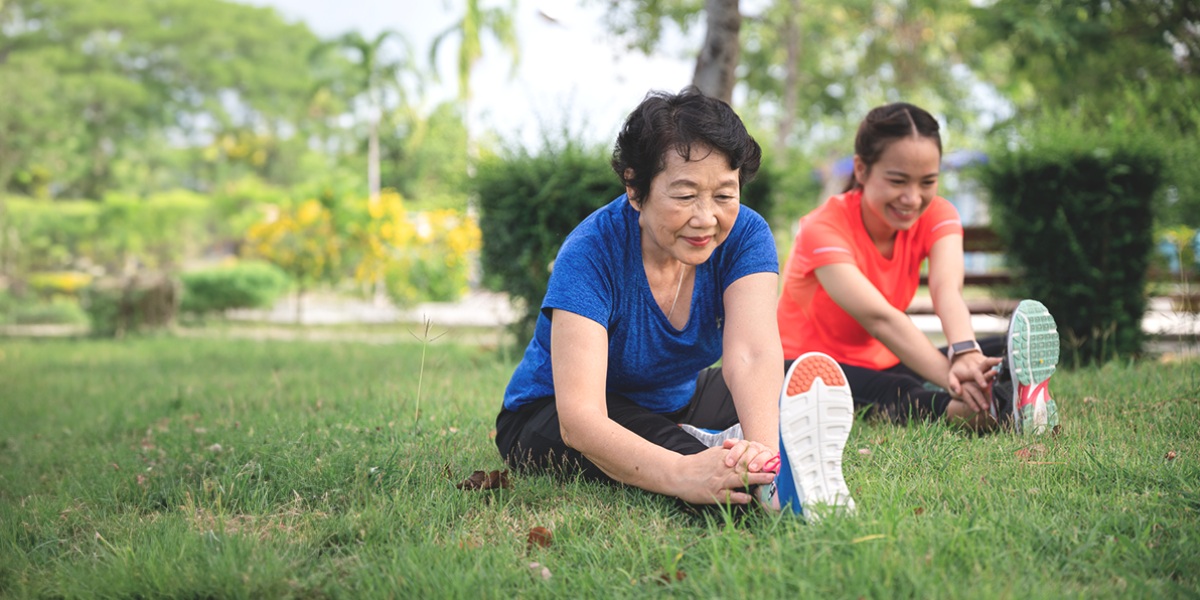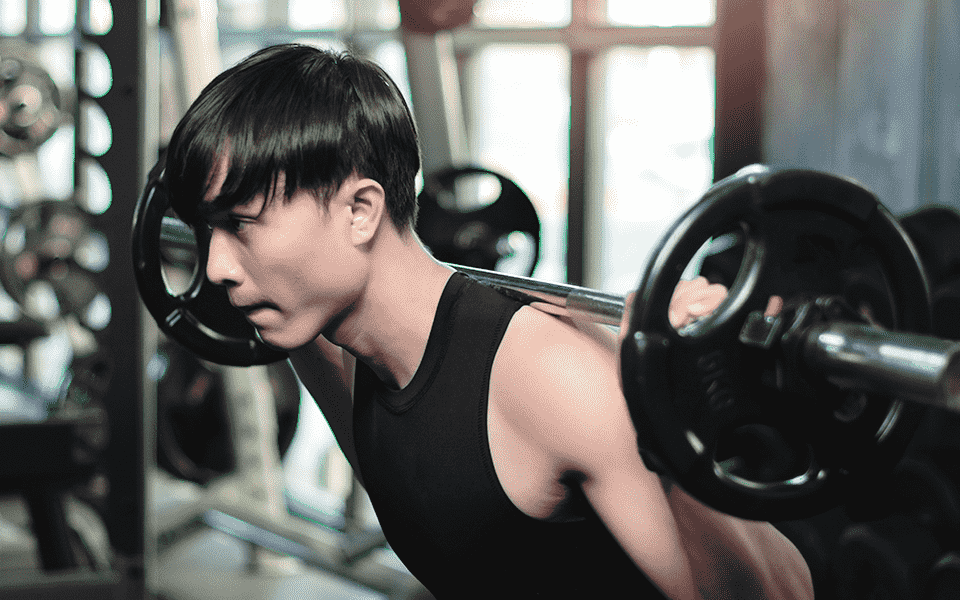Common Sports Injuries Treatment and Prevention
by: Amanda Chua, TCM Physician, Regis Wellness
Last updated: November 29, 2025
Sports is a popular hobby for people all over the world. It is estimated that almost 30 million children and teens participate in sports in the U.S.
However, participating in sports comes with the risk of sports injuries, which is extremely common. It is estimated that 3.5 million injuries occur as a result of sports annually. It is important to note that the term “sports injuries” refers to injuries that commonly occur during sports and exercise, but these injuries are not limited to athletes.
Sports Injuries in Singapore
Similarly, the popularity of sports in Singapore is rather high. In 2017, it was reported that 32.1% of Singaporeans had participated in sports or exercise at least once to twice a week, while 35.9% of Singaporeans had participated in sports or exercise at least thrice a week.
While sports and exercise are key in leading a healthy lifestyle, sports injuries can sometimes be severe and have lasting effects on your body. It is important to understand the ways in which you can lower the risks of sustaining a sport injury in order to keep your body healthy.

Manage and relieve sports injuries at Regis Wellness
High quality, effective, holistic treatments
What are Sports Injuries?
Sports injuries can occur to anyone as long as they are physically active, even if they do not participate in sports. Sports injuries affect the musculoskeletal system, a network consisting of muscles, tendons, ligaments, bones, and other tissues. This system allows us to move about physically and provides our body with the support it needs.
Sports injuries can be divided into two categories, acute and chronic injuries.
Acute injuries refer to those that happen suddenly, due to incidents such as:
- A fall
- A blow to the body
- Twisting of a joint
Chronic injuries refer to those that develop over a longer period of time, usually due to the overuse of an area of the body.
Common Sports Injuries
There are many different types of sports injuries, typically caused by accidents, poor training practices, or improper gear. Sports injuries tend to happen at our joints, due to the demands placed on them when we participate in physical activities. The most common types of sports injuries include:
Rotator Cuff Injuries
The rotator cuff refers to a group of four muscles and tendons that stabilises the shoulder joint. Inflammation can occur at the rotator cuff due to overuse or injury. Rotator cuff injuries are common in people who carry out overhead motions repeatedly.
Tennis Elbow
Tennis elbow, or lateral epicondylitis, occurs when small tears in the tendons in the elbows cause inflammation and pain. This is common among tennis or other racket sport players, as well as people with occupations that require repetitive use of their forearms.
Golfer’s Elbow
Golfer’s elbow, or medial epicondylitis, causes pain to the inner elbows that can spread to your forearms and wrists. This is typically caused by repetitive usage of the wrists and clenching of the fingers. This is common among golfers, thus the name.
Runner’s Knee
Runner’s Knee, or patellofemoral pain syndrome, causes pain near or under the knee caps. This condition is most common among runners but can also affect those who hike or cycle regularly.
Anterior Cruciate Ligament (ACL) Tear
ACL tears are extremely common in athletes. They typically occur as a result of sudden changes in direction, sudden stops or incorrect landings after a jump. ACL tears are most common in soccer and basketball players, but can also happen due to falls, slips and traffic accidents.
Meniscal Tear
The meniscus refers to a C-shaped cartilage between our shinbones and thighbones that protects our joints by absorbing shock and impact from our everyday activities such as walking and running. A meniscus tear is typically caused by activities that involve twisting and rotating of the knee, especially if there is weight placed on it.
Shin Splint
Shin splints, or medial tibial stress syndrome (MTSS), cause pain in the shin. It is generally caused by overexertion of the muscles, tendons and bone tissues. It is a common sports injury among runners and joggers.
Ankle Sprain
Rolling, twisting, or turning your ankle in an awkward way can cause an ankle sprain to occur. The ligaments in your ankle are stretched and torn as a result. This is a common occurrence in sports that require a lot of pivoting, such as basketball and volleyball. Ankle sprains can happen as a result of daily activities. For example, walking on uneven surfaces can cause ankle sprains if you trip and fall.
Achilles Tendinitis
Achilles tendonitis is an injury to the Achilles tendon, typically the result of overuse. It is most commonly seen in runners who have suddenly increased the intensity or duration of their run, putting sudden extra strain on the Achilles tendon. It is also common amongst people who participate in sports on an irregular basis.
Common Symptoms of Sports Injuries
It is important for you to be able to spot the common signs of sports injuries, even if you are not an athlete. Sports injuries can cause pain and can be aggravated if you do not halt activity in time. Common symptoms of sports injuries include:
- Severe pain
- Swelling or bulging
- Inability to move your joint normally
- Weakness in limb
- Bone or joint that looks out of place
- Pain that worsens with physical activity
- Swelling and aching when you rest
It is important that you stop all physical activity when you experience signs of a sports injury in order to protect your body. Appropriate and timely treatment with sufficient rest can help you avoid complications and speed up your recovery process.
Risk Factors of Sports Injuries
While anybody can get a sports injury, certain factors may increase your risk of sustaining a sports injury. These include:
- Improper exercise technique
- Overexertion
- Sudden increase of training intensity
- Insufficient rest
- Running or jumping on hard surfaces such as concrete
- Improper or poor fitting footwear
- Prior injuries
- Age
Preventing Sports Injuries
Sports injuries can be difficult and sometimes impossible to avoid. However, there are steps that you can take in order to lower your risk of sustaining a sports injury. These include:
- Give your body sufficient rest. This can be done by exercising different muscle groups every day or exercising every other day.
- Sufficient hydration. Keeping your body hydrated during physical activity can help you avoid dehydration, heat exhaustion and heat stroke.
- Conduct proper warmups before exercising. Proper warm-up sessions can help to prevent sports injuries.
- Conduct proper cool-down sessions after exercising. Proper cool-down sessions can help to prevent sports injuries. Ideally, they should take about two times as long as your warm-ups.
- Ensure that you use proper techniques during sports. Improper techniques can increase the amount of strain and stress on your muscles and tendons, increasing your risk of injury.
- Progressive training. When increasing the intensity of your exercise or training, ensure that it is done progressively so that your muscles and tendons have sufficient time to adapt to the increasing strain placed on them.
Treatment and Rehabilitation for Sports Injuries
RICE Method for injuries – Rest, Ice, Compression and ElevationRest
Rest is the first step to treating any type of sports injury, besides medical emergencies such as a fracture. Immediately stopping any forms of physical activity will prevent further aggravation of your injury.
Ice
Applying an ice pack to the affected area can help to relieve pain and swelling. This can be done for 15 to 20 minutes at a time, every two to three hours.
Compression
Using bandages to compress the injured area can provide support, reduce blood flow and swelling.
Elevation
Elevating the injured area above your heart can help with controlling swelling and bruising, alleviating pain and discomfort.
Pain Relief Medication
The pain caused by a sports injury can sometimes be unbearable and cause discomfort. A doctor may prescribe pain relief medication to help treat symptoms of pain and swelling. This can include medications such as paracetamol, ibuprofen, or non-steroidal anti-inflammatory drugs (NSAIDs) in the form of tablets or creams.
Surgery
For severe sports injuries such as a fracture or a ligament tear, surgery may be required.
Immobilisation
Immobilising your injured limbs can be helpful in preventing further injuries by limiting movement. Slings, splints and casts can be used while your limbs heal from your injury. This will also help with alleviating pain, swelling and muscle spasms.
Physiotherapy and Rehabilitation for Common Sports Injuries
Physiotherapy plays a key role in managing common sports injuries by reducing pain, restoring movement, and helping athletes and active individuals return safely to their activities. Treatment focuses on improving joint mobility, muscle strength, flexibility, and movement control, while also addressing the underlying causes of injury such as overuse, poor technique, or muscle imbalances.
A structured physiotherapy and rehabilitation program is tailored to the type and severity of the sports injury, whether it involves muscles, tendons, ligaments, or joints. Working with a trained physiotherapist ensures that exercises and treatments are progressed safely and effectively to support healing and reduce the risk of re-injury.
Physiotherapy for common sports injuries typically progresses through the following treatment focuses:
- Pain Relief, Swelling Control & Early Mobility Phase
- Cold therapy and hot therapy to manage swelling, relieve pain, and ease stiffness in the injured area
- Electrotherapy and TENS therapy to modulate pain and support tissue healing
- Ultrasound therapy to promote circulation, reduce inflammation, and assist soft tissue recovery
- Gentle range-of-motion exercises to maintain or restore joint mobility without overloading the injured tissues
- Manual therapy techniques such as joint mobilisation, myofascial release, trigger point therapy, and deep tissue massage or sports massage to ease muscle tension and improve comfort
- Strengthening, Flexibility & Movement Control Phase
- Strengthening exercises targeting key muscle groups around the injured area (e.g. hips, core, shoulders, or lower limb muscles) to restore support and control
- Stretching and flexibility work to reduce tightness in overused muscles and improve overall range of motion
- Balance and proprioception training to enhance joint stability and reduce the risk of future sprains or strains
- Core and whole-body conditioning using guided programs such as strength and conditioning to improve overall athletic resilience
- Technique and movement retraining through sports physiotherapy to correct faulty movement patterns and reduce stress on vulnerable areas
- Advanced Sports-Specific Training & Return-to-Play Phase
- Progressive strength and conditioning drills tailored to the demands of the sport, including power, agility, and endurance training
- Dynamic movement training such as jumping, cutting, sprinting, and change-of-direction drills when appropriate
- Sport-specific rehabilitation under the guidance of sports injury management to safely bridge the gap between rehab and full competition
- Maintenance strategies including home exercise programs, warm-up routines, and recovery strategies to prevent recurrence
- Guidance on graded return to training and competition, based on pain levels, strength, and functional testing
Our physiotherapist will monitor your progress closely, adjusting treatment intensity and exercise difficulty as you recover. With a well-structured rehabilitation plan and consistent follow-through, most individuals experience reduced pain, improved performance, and a lower risk of future sports injuries.
TCM for Common Sports Injuries
Traditional Chinese Medicine (TCM) offers natural, holistic treatments for common sports injuries by reducing pain, easing inflammation, improving circulation, and restoring balance to the body’s energy systems. TCM approaches such as acupuncture, herbal medicine, cupping, and gua sha can be used individually or in combination to support tissue healing and enhance recovery.
TCM treatment plans are customised based on the type of injury and the individual’s constitution, focusing on relieving pain, relaxing tight muscles, and promoting the body’s natural healing response. These therapies can also complement physiotherapy for a more comprehensive rehabilitation approach.
TCM for sports injuries typically progresses through the following treatment focuses:
- Pain Relief, Inflammation Reduction & Muscle Relaxation
- Acupuncture to regulate Qi and blood flow, reduce pain, calm irritated tissues, and promote healing in acute or chronic sports injuries
- Cupping therapy to increase local circulation, relieve muscle tightness, and reduce stiffness in strained or overworked muscle groups
- Gua Sha to release muscle tension, promote microcirculation, and reduce inflammation associated with sprains, strains, or overuse injuries
- Targeted TCM pain-relief approaches aligned with broader TCM pain relief treatments, supporting faster recovery and reducing reliance on pain medication
- Tissue Healing, Circulation Support & Functional Recovery
- Individualised TCM herbal medicine to reduce inflammation, promote tissue repair, and strengthen tendons and ligaments
- Herbal formulas containing herbs with analgesic, anti-inflammatory, and circulation-enhancing properties to support overall recovery
- Tui Na (Chinese medical massage) may be applied to improve movement, reduce stiffness, and support the healing of injured tissues
- Integration with physiotherapy when beneficial, ensuring that TCM treatments support joint mobility and muscular recovery
- Long-Term Balance, Performance Support & Injury Prevention
- Follow-up acupuncture and herbal support to maintain muscle relaxation, improve circulation, and reduce the likelihood of recurring sports injuries
- TCM-based lifestyle and dietary recommendations to minimise internal imbalances that may contribute to inflammation or muscle tightness
- Advice on warm-up routines, recovery practices, and training load from a TCM perspective to optimise physical performance
- Collaborative injury management with sports physiotherapists to maintain long-term mobility, strength, and athletic readiness
With a personalised combination of acupuncture, cupping, herbal therapy, and gua sha, TCM provides a natural and effective approach to relieving pain, accelerating recovery, and supporting long-term sports performance.
Disclaimer:
The information on this website, including but not limited to, text, graphics, images, videos and all other materials contained on this website is for informational purposes only. None of the material is meant to replace a certified and registered Doctor's professional medical advice, diagnosis, and treatment.
No warranties or representations are given in respect of the medical information. Regis Wellness, Regis Wellness’s staff, and the website's operator will not be held liable if a user suffers any injury or loss after relying upon the medical information on this website.
Any devices used for technology-enhanced therapies are intended for use only for general well-being purposes or to encourage or maintain a healthy lifestyle and is not intended to be used for any medical purpose (such as the detection. diagnosis, monitoring, management or treatment of any medical condition or disease). Any health-related information provided by this device or software should not be treated as medical advice. Please consult a certified and registered Doctor for any medical advice required. As with all medical conditions, there are exceptions and nuances to individuals’ condition and treatment modalities. We aim to provide only a general understanding for each section.
Minnis, Gregory. “What Is the RICE Method for Injuries?” Rest, Ice, Compression, and Elevation (Rice): Method and How It Works, Medical News Today, 11 Apr. 2018, https://www.medicalnewstoday.com/articles/321469.
“Overview of Sports Injuries.” Sports Injuries - Acute, Chronic & Common Injuries, U.S. Department of Health and Human Services, Sept. 2021, https://www.niams.nih.gov/health-topics/sports-injuries#:~:text=The%20term%20%E2%80%9Csports%20injury%E2%80%9D%20refers,may%20not%20participate%20in%20sports
Pierce-Smith, Daphne. “Preventing Sports Injuries.” Preventing Sports Injuries - Health Encyclopedia - University of Rochester Medical Center, University of Rochester Medical Center, https://www.urmc.rochester.edu/encyclopedia/content.aspx?contenttypeid=85&contentid=P00935.
https://www.urmc.rochester.edu/encyclopedia/content.aspx?contenttypeid=85&contentid=P00935. “Sports Injuries.” Sports Injuries: MedlinePlus, U.S. National Library of Medicine, 2 Jan. 2017, https://medlineplus.gov/sportsinjuries.html.
“Sports Statistics and Publications.” mccy, Ministry of Culture, Community and Youth, 3 Mar. 2020, https://www.mccy.gov.sg/about-us/news-and-resources/statistics/2019/jan/sports-statistics-and-publications.
“Treatment.” Sports Injuries - Treatment - NHS, NHS Choices, 31 Mar. 2020, https://www.nhs.uk/conditions/sports-injuries/treatment/.
Kang, Liang et al. “Application of traditional Chinese therapy in sports medicine.” Sports medicine and health science vol. 3,1 11-20. 18 Feb. 2021, doi:10.1016/j.smhs.2021.02.006


